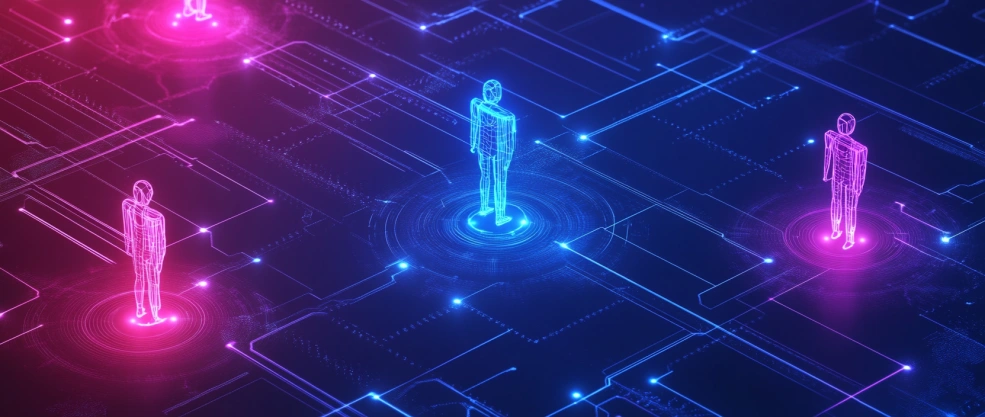Autonolas — is a decentralized project that combines artificial intelligence and blockchain. It enables the development of autonomous AI agents that operate without human intervention. These agents can perform complex tasks, participate in DeFi protocols, and automate processes. The platform supports the creation of agent economies, where users can deploy and co-own them. The OLAS token incentivizes developers and operators who maintain the ecosystem.
- Overview of the Autonolas Project
- Technological Architecture
- Autonolas Ecosystem and Applications
- Tokenomics and OLAS Economy
- Future Prospects of Autonolas
- Conclusion
Overview of the Autonolas Project
Autonolas was created as a decentralized infrastructure for developing autonomous software agents that can operate in Web3 and perform various tasks. The primary goal of the project is to build a transparent and sustainable ecosystem where users can control and manage AI services without relying on centralized platforms.
Autonomous agents in the system can function independently or in groups, interacting with each other to accomplish more complex tasks. The project emphasizes co-ownership of agents, allowing groups of developers and users to coordinate work and share rewards.
Autonolas supports multichain integration, including Ethereum, Optimism, and Arbitrum, making it compatible with various blockchain networks. This ensures flexibility and broad accessibility for developers and users.
The ecosystem continues to expand, covering new areas such as decentralized autonomous organizations (DAOs), financial tools, and Web3 services. With its open-source code and co-ownership opportunities, the project attracts developers, investors, and users looking to leverage cutting-edge AI solutions.
Technological Architecture
Autonolas relies on two key components that ensure the functionality of autonomous agents: Olas Protocol and Olas Stack. These elements form the foundation of the system and enable its decentralized operation.
Olas Protocol manages economic incentives and reward distribution. It includes:
- Developer Incentives – rewards for contributing to agent code. Developers who create and improve agents receive compensation in OLAS tokens, fostering continuous ecosystem growth and innovation.
- Staking and Bonding Mechanisms – providing liquidity for network stability. Staking allows token holders to earn rewards by securing the ecosystem, while bonding mechanisms encourage long-term participation.
- Voting and Governance – enabling users to participate in decision-making. OLAS holders can influence project development by voting on updates, tokenomics adjustments, and network improvements.
These mechanisms create a sustainable and self-regulating ecosystem where participants actively shape its future. This makes the system more decentralized and efficient.
Olas Stack - an open platform that allows the development and deployment of autonomous agents. It supports:
- Use of decentralized computing. Agent operations run without centralized oversight, making them independent of third-party servers.
- Integration with blockchains via specialized adapters. This enables agents to function across various networks, including Ethereum, Optimism, and Arbitrum.
- High transparency and modular architecture. Developers can combine different components to create specialized agents for specific tasks.
Autonolas focuses on flexibility and adaptability, allowing developers to test, modify, and enhance agents in real time. This is particularly beneficial for DeFi protocols, DAOs, and automated services.
Autonolas Ecosystem and Applications
Autonolas provides extensive opportunities for developing autonomous agents that can be applied in various fields. These agents can operate independently, assisting users in financial management, forecasting, and other tasks.
The use of autonomous agents in DeFi, DAO, and Web3 makes the project unique and promising. Below is a table showcasing key use cases.
| Agent Type | Application | Example |
|---|---|---|
| Sovereign Agents | Independent autonomous programs | BabyDegen (DeFi trading) |
| Decentralized Agents | Reliable AI models operating within a network | Governatooorr (AI-powered DAO governance) |
| Agent Economies | Systems where agents interact with each other | Predict (Prediction markets) |
Beyond financial solutions, autonomous agents can be used for data management, process automation, and even AI application development. For example, agents can analyze market trends, forecast cryptocurrency price changes, or manage asset portfolios.
Thanks to their flexibility and adaptability, Autonolas agents can be applied in various sectors, fulfilling both financial and analytical functions.
Tokenomics and OLAS Economy
Autonolas utilizes the OLAS token, which serves multiple functions within the ecosystem. It acts as a means of payment, rewards distribution, and governance participation.
Before distributing tokens, the Autonolas team designed a sustainable issuance model aimed at long-term development. The inflationary model of OLAS includes an annual supply increase of 2% after the first 10 years, ensuring a balance between demand and supply.
Key functions of the OLAS token:
- Payment for Autonomous Agent Services – users purchase access to AI-powered services. This enables agents to assist in everyday tasks, simplifying the management of digital assets.
- Developer Incentives – rewards for creating and maintaining agents. Developers contributing to ecosystem growth receive OLAS tokens as motivation, fostering continuous updates and platform improvements.
- Governance Participation – voting in decentralized initiatives. Token holders can propose changes to the protocol, influencing the project's development and future direction.
The OLAS distribution model makes the project attractive to both developers and investors, maintaining a balance between ecosystem growth and economic incentives for its participants.
Future Prospects of Autonolas
Autonolas continues to actively develop its ecosystem, focusing on scalability and integration with other blockchains. The project aims to expand agent functionality, introduce new security mechanisms, and improve interactions with DeFi and DAO.
One of the key directions is the creation of autonomous solutions for managing digital assets. AI agents will be able to adapt to market conditions, reducing losses and increasing operational efficiency. Additionally, enhanced multichain support is planned, allowing users to operate across different blockchains without limitations.
Autonolas is actively attracting developers and users to build a fully decentralized environment where AI agents can function without external intervention. In the coming years, the project aims to become a leader in autonomous Web3 technologies, opening up new possibilities for automated digital service management.
Conclusion
Autonolas is a promising project that combines blockchain and artificial intelligence to create autonomous AI agents. With its open-source nature, decentralized governance, and flexible architecture, it offers unique opportunities for Web3 automation. The developed tokenomics and multichain infrastructure support make it a sustainable and attractive platform for developers and investors. In the future, Autonolas could play a key role in shaping the next generation of decentralized AI systems.





